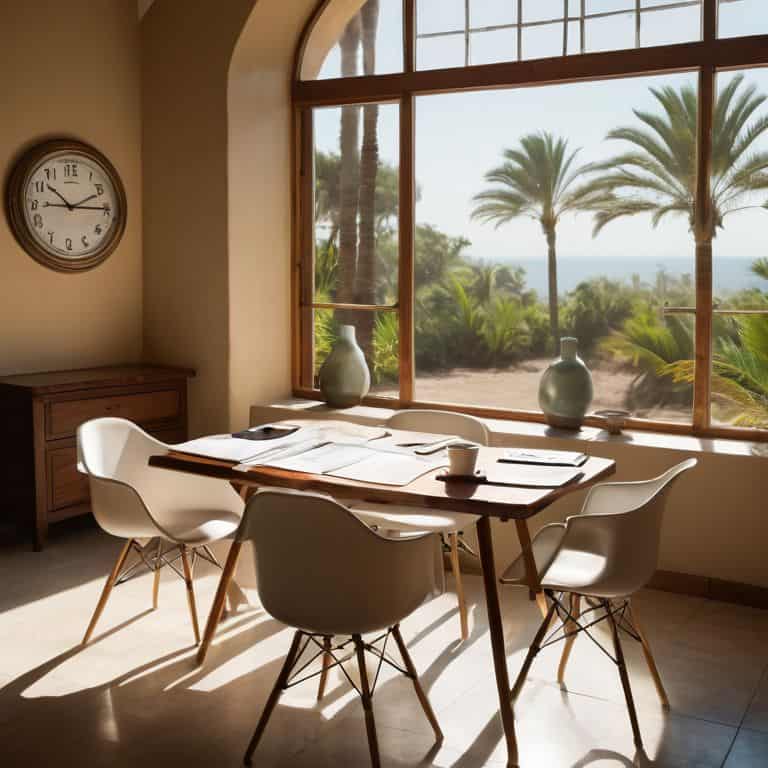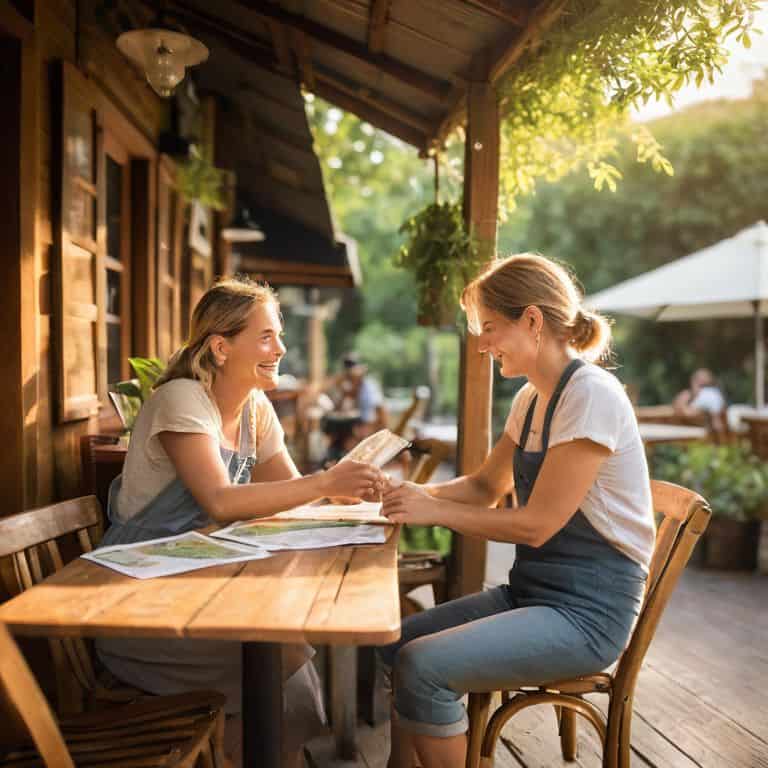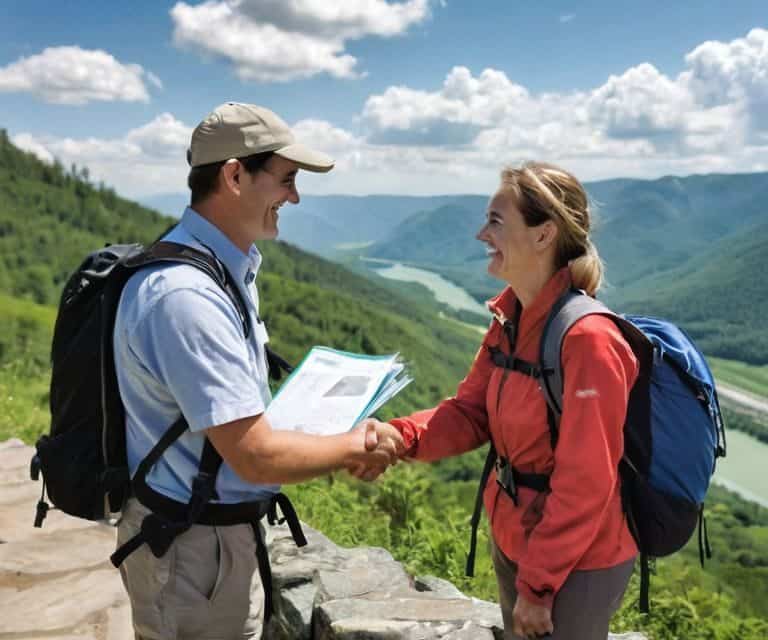I still remember the first time I tried to work with tourism boards – it was a disaster. I had just started my travel blog and thought that partnering with them would be a guaranteed way to get insider access to the best spots and experiences. But what I quickly learned was that it’s not just about sending a few emails and waiting for the freebies to roll in. In fact, most tourism boards are bombarded with requests from bloggers and influencers, and it takes a lot more than just a pretty website to stand out. So, if you’re looking to how to work with tourism boards and actually get something out of it, you need to be willing to put in the work and build real relationships.
So, what can you expect to learn from this article? I’ll be sharing my honest and practical advice on how to approach tourism boards, what to expect from these partnerships, and most importantly, how to avoid common pitfalls. I’ll give you the lowdown on how to craft a pitch that actually gets noticed, how to negotiate fair terms, and how to ensure that both you and the tourism board get what you want out of the partnership. By the end of this article, you’ll have a clear understanding of how to work with tourism boards and start building meaningful relationships that will take your travel blogging to the next level.
Table of Contents
Guide Overview: What You'll Need

Total Time: several weeks to several months
Estimated Cost: $0 – $5,000
Difficulty Level: Intermediate / Hard
Tools Required
- Computer (with internet connection)
- Phone (for communication)
- Camera (for capturing high-quality images)
Supplies & Materials
- Business Cards professional designs
- Marketing Materials brochures, flyers, etc.
- Research Documents on local tourism industry, 10 pages or more
Step-by-Step Instructions
- 1. First, research the tourism board you’re interested in partnering with, and make sure their goals and values align with yours. I’ve learned the hard way that it’s not just about finding a board that wants to work with travel bloggers, but also about finding one that genuinely cares about promoting sustainable and responsible tourism. Look for boards that have a clear environmental policy in place and are transparent about their initiatives.
- 2. Next, build a relationship with the tourism board by attending industry events, conferences, and workshops. This is where you can meet the people behind the board and start building a personal connection. Don’t just collect business cards, though – take the time to have real conversations and learn about their priorities and challenges. I’ve found that a simple “hello, how can I help?” can go a long way in establishing a mutually beneficial partnership.
- 3. Once you’ve established a connection, develop a proposal that outlines how you can work together to promote the destination. Be specific about your audience and what type of content you can create to showcase the region. Include examples of your previous work, engagement metrics, and any other relevant statistics that demonstrate your reach and influence. Remember, the goal is to show how your partnership can benefit both parties, not just to ask for free trips or perks.
- 4. When negotiating the terms of your partnership, be clear about your expectations and what you’re willing to offer in return. This might include sponsored content, social media promotions, or even hosting a webinar or workshop. Make sure you understand the board’s requirements and are comfortable with their expectations – and don’t be afraid to push back if you feel like the terms are unfair or unrealistic.
- 5. As you start working with the tourism board, respect their brand guidelines and ensure that your content aligns with their messaging and values. This might mean fact-checking your posts or avoiding certain topics that are sensitive or off-limits. Remember, you’re representing not just yourself, but also the destination and its people – so be mindful of your words and actions.
- 6. To make the most of your partnership, stay organized and keep track of your progress, deadlines, and deliverables. This might involve using a project management tool or setting up regular check-ins with the board to discuss your work and provide updates. I’ve found that a simple spreadsheet can be a lifesaver when it comes to keeping track of multiple partnerships and projects.
- 7. Finally, follow up and follow through on your commitments to ensure a successful and ongoing partnership. This might mean sharing your content with the board, providing feedback on their initiatives, or even hosting a press trip or FAM tour. By showing that you’re invested in the partnership and willing to put in the effort, you can build a strong and lasting relationship with the tourism board – and create some amazing content along the way.
How to Work With Tourism Boards

When it comes to building relationships with tourism boards, I’ve found that it’s all about being genuine and transparent. Don’t just show up with a business card and expect things to happen – take the time to research the board’s goals and objectives, and think about how your own projects and values align with theirs. This will help you create a strong foundation for a partnership that benefits both parties.
One of the most important things to keep in mind is understanding tourism board funding opportunities. These boards often have limited budgets, so it’s crucial to be realistic about what you’re asking for and to be prepared to offer something in return. This might mean providing measurable ROI for your campaigns, or offering to help promote the board’s events and initiatives through your own social media channels.
By taking a thoughtful and collaborative approach, you can leverage social media for tourism board partnerships and create a win-win situation for everyone involved. Remember to stay flexible and open to new ideas, and don’t be afraid to think outside the box when it comes to tourism board event planning strategies. With a little creativity and a lot of hard work, you can build a strong and lasting partnership with a tourism board that will help take your projects to the next level.
Building Relationships That Actually Matter
To really make a partnership with a tourism board work, you need to build a relationship that goes beyond just exchanging emails or meeting for coffee once. I’ve found that it’s all about finding common ground and being transparent about what you can offer each other. For me, that’s meant sharing my passion for geocaching and one-pot cooking with the locals, and finding ways to showcase their hidden gems through my blog. It’s not just about what they can do for you, but about what you can bring to the table as a travel blogger.
I recall a time when I worked with a small tourism board in a rural town, and we collaborated on a project that highlighted the local street food scene. By working together and being open about our goals and expectations, we were able to create something truly special that benefited both parties. It’s these kinds of relationships that will take your travel blogging to the next level and help you create content that truly resonates with your audience.
Cutting Red Tape With Tourism Boards
So, you’ve made contact with the tourism board and they’re interested in working with you – now it’s time to cut through the red tape. My advice? Be clear about what you can offer, and what you need from them. Don’t be afraid to ask for specific support, like access to local guides or exclusive events. I’ve found that tourism boards are often more willing to collaborate than you think, as long as you can demonstrate how your content will benefit their region. Be prepared to provide examples of your previous work and explain how you plan to showcase their destination in a unique and compelling way.
Tourism Board Hacks: 5 Tips to Get You Started
- Ditch the generic email templates and actually research the person you’re contacting – a simple LinkedIn lookup can go a long way
- Be clear about what you can offer in return, whether it’s social media promotion or a blog post – tourism boards like to know you’re not just looking for a free ride
- Show up to meetings prepared with specific ideas and a solid understanding of the local culture – it’s not just about you, it’s about how you can help tell the story of the place
- Don’t be afraid to ask for what you really want, whether it’s access to a specific event or a behind-the-scenes tour – the worst they can say is no
- Follow up, follow up, follow up – a simple thank-you note or a brief update on your progress can go a long way in building a real relationship with the tourism board
Key Takeaways for Working with Tourism Boards
Ditch the formalities and focus on building genuine relationships with tourism board representatives – it’s about people, not just partnerships
Be prepared to think outside the box and propose unique collaboration ideas that benefit both you and the tourism board, rather than just following the standard press trip format
Remember that working with tourism boards is a two-way street: be clear about what you can offer in terms of content and exposure, and don’t be afraid to negotiate for the experiences and access that will truly enrich your storytelling
The Real Secret to Tourism Board Success
Tourism boards aren’t just gatekeepers of brochures and bland press releases – they can be powerful allies if you take the time to build real relationships and show them you’re genuinely invested in telling the story of their city, not just peddling some watered-down tourist fantasy.
Clara Bishop
Making the Most of Tourism Board Partnerships

When it comes to working with tourism boards, building genuine relationships is crucial. As I’ve mentioned earlier, it’s all about cutting through the red tape and finding mutually beneficial partnerships. By following the steps outlined in this guide, you’ll be well on your way to creating meaningful connections with tourism boards and experiencing the authentic side of a destination. Remember, it’s not just about exchanging business cards or attending conferences – it’s about creating a win-win situation that benefits both you and the tourism board.
As you embark on your journey to collaborate with tourism boards, keep in mind that immersion is key. Don’t be afraid to take the road less traveled and get a little lost in the process. With persistence, creativity, and a willingness to learn, you can turn these partnerships into incredible opportunities that will take your travel blogging or digital nomadism to the next level. So, go ahead, take the leap, and watch your adventures unfold in ways you never thought possible.
Frequently Asked Questions
What are the most effective ways to initially reach out to tourism boards and get their attention?
Honestly, it’s all about personalizing your approach. Research the board’s current projects and initiatives, then send a tailored email or message highlighting how your unique voice and audience align with their goals. Mention a specific campaign or event that resonated with you and explain how you can help amplify their message.
How can I ensure that my partnership with a tourism board is mutually beneficial and not just a one-way promotion?
To make it a two-way street, I always ask myself: what can I offer the tourism board that’s not just a generic social media post? Maybe it’s exclusive content, a behind-the-scenes look, or a workshop on storytelling. Think about what sets you apart and propose a collaboration that benefits both parties.
What are some common mistakes to avoid when working with tourism boards to avoid being seen as just another tourist or travel blogger?
Don’t be a cookie-cutter blogger, regurgitating press releases. Actually engage with locals, try the weird foods, and explore beyond the brochure. Tourism boards can spot a fake from a mile away, so ditch the superficial stuff and show genuine interest in the culture. That’s how you build real relationships and get beyond the standard tourist fare.
